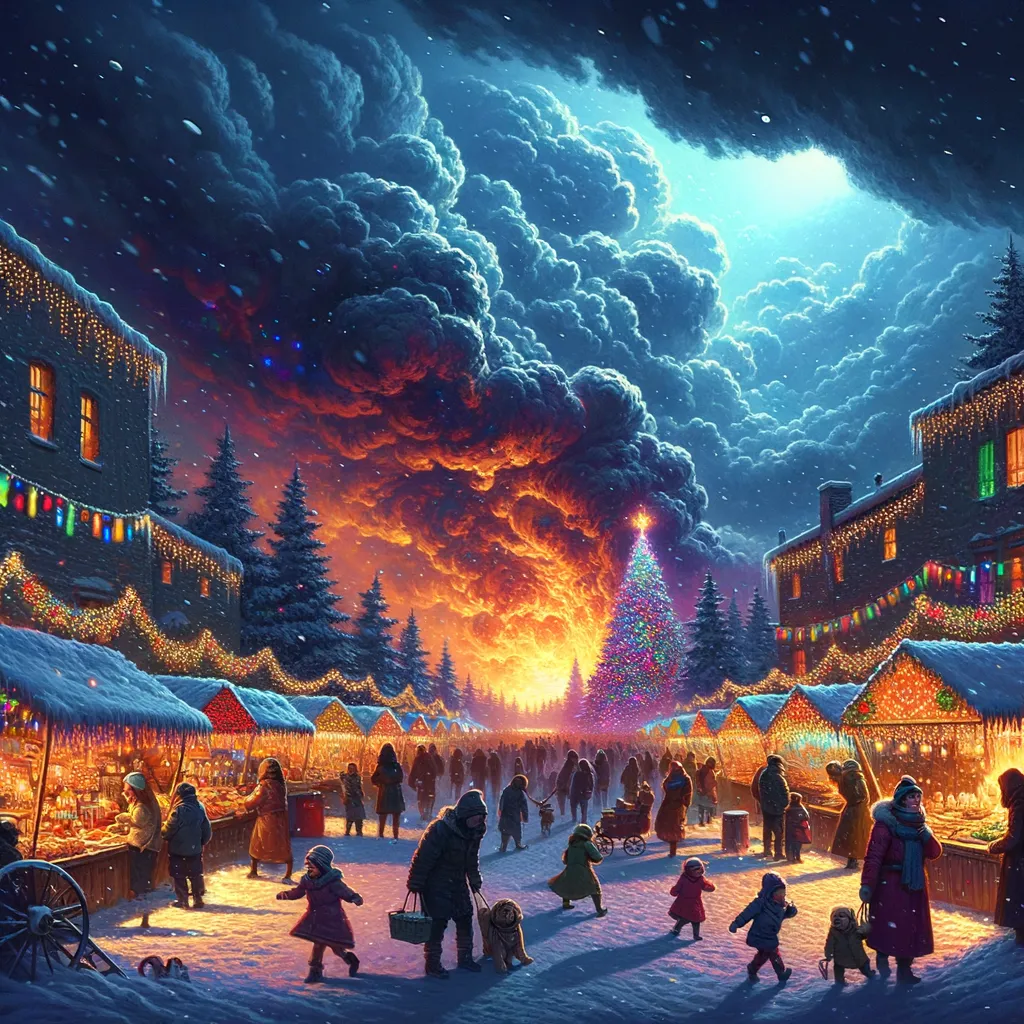A Festival of Kindness: Discovering Hidden Generosity
At the edge of a quaint town, the air was thick with winter’s chill and the promise of transformation. An idea sparked to life, envisioning a festival dedicated to the often-overlooked virtue of generosity, where laughter of children mingled with the fluttering of colorful banners telling stories of kindness. As booths sprang up, each offering a taste of cultural heritage and shared meals, the community was invited to weave their narratives into a vibrant tapestry of compassion. Yet, amidst the joy, a storm loomed on the horizon, representing the shadows of selfishness that threaten to eclipse the light of giving. In that moment, as flickering candles illuminated the gathering, the festival revealed itself as a powerful reminder that even the smallest acts of kindness can unite us, urging a collective awakening to the beauty of connection in a divided world.
In the memory of January 28, 2002, I found myself standing at the edge of a small town, where the chill of winter lingered in the air, whispering secrets of the past. The sky was a muted gray, as if it were draping a heavy curtain over the day, yet a flicker of warmth ignited my heart. This day, I thought, could be transformed into something remarkable, a festival that would honor the attribute of generosity, illuminating the shadows of a world often obscured by self-interest. The idea unfurled like a delicate blossom, urging me to imagine how a community could come together to celebrate this often-overlooked virtue.
As I wandered the streets, envisioning the festival, I saw colorful banners fluttering in the brisk wind, each inscribed with stories of kindness and selflessness. Children would weave through the crowd, their laughter ringing like chimes, each giggle a reminder that joy often stems from giving rather than receiving. Booths would sprout up like mushrooms after a rain, each one offering a glimpse into the heart of generosity—local artists would create paintings inspired by acts of kindness, while bakers would share warm loaves of bread, their crusty exteriors hiding the soft, nurturing goodness within.
A stage would rise in the town square, where storytellers would spin tales of unexpected generosity that had transformed lives. Each narrative would weave a tapestry rich with emotion, revealing how a single act of kindness could ripple through the fabric of existence. I imagined an elderly man, his eyes twinkling like stars, recounting how a stranger once offered him a meal when he was lost and hungry, a small gesture that became a lifeline in his darkest hour. The audience, drawn in by these stories, would feel their hearts swell, bound together by shared experiences of humanity.
The aroma of food wafting through the air would not merely tempt the taste buds; it would symbolize the very essence of community. Local chefs would gather to prepare dishes that honored the idea of sharing, each plate a celebration of cultural heritage and hospitality. People would sample flavors from various backgrounds, their palettes dancing in unison, reminiscent of how generosity transcends boundaries and unites diverse souls. The festival would become a vibrant mosaic, each dish representing a piece of someone’s story, an invitation to connect over the universal act of sharing a meal.
Amidst the festivities, a wall of kindness would emerge, adorned with handwritten notes from attendees. Each note would detail a moment of generosity, a memory captured in ink that would serve as a testament to the power of giving. This wall, a living document of goodwill, would invite people to reflect on their own lives, to acknowledge the times they had both given and received. The act of writing would become cathartic, a gentle reminder that everyone has the capacity to be a beacon of light in someone else’s darkness.
As dusk approached, the festival would culminate in a candlelight vigil, where participants would gather, each holding a flickering candle that symbolized hope and compassion. The soft glow would illuminate faces marked by laughter and tears, reflecting the myriad experiences shared throughout the day. In that serene moment, a profound sense of unity would envelop the crowd, as if the very air was charged with an electric current of goodwill, reminding everyone present of the beauty found in both giving and receiving.
Yet, as I stood in this imagined space, the twist of the narrative began to unfold. A storm was brewing just beyond the horizon, a metaphor for the darker side of human nature—the greed and selfishness that so often overshadow generosity. The festival, while a celebration, also served as a poignant reminder that the act of giving requires courage, especially in a world that sometimes seems intent on tearing us apart. It was a call to arms, an invitation to confront the storm and emerge with a heart full of compassion.
In the heart of the festival, as the candles flickered against the encroaching darkness, the paradox of generosity became clear. It was not merely about grand gestures but also about the quiet, everyday acts that often go unnoticed—the neighbor who shovels your driveway, the friend who listens without judgment. Generosity is woven into the fabric of our lives, often hidden in plain sight, waiting for us to recognize its power.
As I stepped back from this vivid tapestry of generosity, I realized that the festival was not just an event; it was a mirror reflecting our innermost selves, urging us to acknowledge the moments we often overlook. It spoke to the need for connection in a world that sometimes feels divided, and it beckoned us to embrace the simple yet profound truth that we are stronger together.
In contemplating the essence of this festival, I couldn’t help but wonder: in a world filled with distractions and divisions, how can we cultivate a spirit of generosity that transcends our differences and binds us together as a community?
In the delicate interplay of light and shadow, the true essence of generosity emerges, revealing the profound connections that unite humanity in a tapestry of shared kindness.



